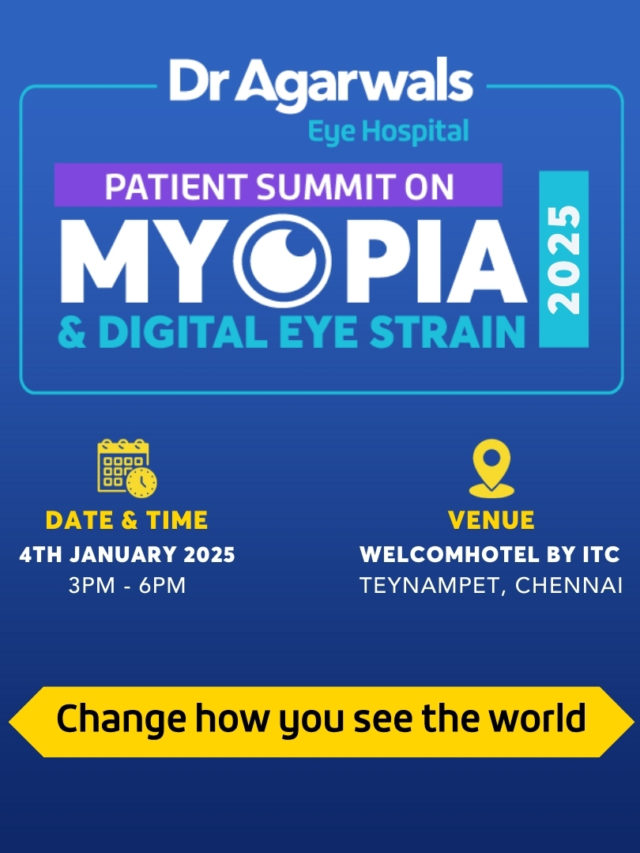Panophthalmitis is a severe and rapidly progressing infection that affects all layers and structures of the eye. Unlike localised infections, this condition extends to surrounding orbital tissues and often carries a poor visual prognosis.
Understanding the meaning, its symptoms, causes, and available panophthalmitis treatment options is vital for early detection and management. This article also explains the difference between endophthalmitis and panophthalmitis to clarify how these conditions vary in severity and outcome.

What Is Panophthalmitis?
Definition & How It Differs From Endophthalmitis
Panophthalmitis in the human eye is defined as a destructive infection involving all ocular tissues, including the sclera, retina, and cornea, and extending into orbital tissues. It is considered more severe than endophthalmitis, which primarily affects intraocular tissues without extending to the orbit.
In discussions on endophthalmitis vs panophthalmitis, the latter is acute, more destructive, and typically harder to manage. Knowing the difference between endophthalmitis and panophthalmitis helps clinicians prioritise aggressive and urgent care.
What Happens Inside the Eye?
Once infection sets in, it spreads quickly throughout the anterior and posterior segments. This leads to corneal opacity, scleral abscess formation, and sometimes rupture or perforation.
If untreated, the infection can cause permanent blindness or loss of the eye. Recognising panophthalmitis symptoms early is crucial for timely treatment.
Causes & Risk Factors of Panophthalmitis
Infectious Causes (Bacteria, Fungi & Viruses)
Bacterial infections are the most common cause. Virulent pathogens like Klebsiella pneumoniae, Streptococcus, Pseudomonas aeruginosa, and Staphylococcus aureus are frequently implicated. Rarely, fungi and viruses can also trigger panophthalmitis in the human eye.
Exogenous Triggers – Trauma & Surgery
Penetrating eye injuries, intraocular surgeries, or injections may introduce microbes into the eye. Poor sterile techniques increase the risk of post-traumatic panophthalmitis or panophthalmitis after surgery. Protective eyewear and safe surgical practices are key preventive measures.
Endogenous Factors – Systemic Infections & Health Conditions
Systemic infections like septicemia, pneumonia, liver abscesses, or endocarditis may spread to the eye, causing endogenous panophthalmitis. Risk factors include diabetes, immunosuppression, intravenous drug use, and chronic illnesses.
Symptoms & Early Warning Signs
Ocular Symptoms
Panophthalmitis symptoms include severe pain, reduced vision, redness, swelling, and light sensitivity. Clinical findings may reveal corneal clouding, scleral abscess, and even perforation. These signs indicate urgent care is needed.
Systemic & Associated Symptoms
Patients may also develop fever, chills, and fatigue, reflecting systemic infection. Sometimes panophthalmitis in the human eye can mimic orbital cellulitis, making diagnosis more challenging.
When To Seek Immediate Care
Any sudden onset of eye pain, swelling, or vision loss should prompt emergency medical attention. Delays in treatment significantly worsen outcomes, often leading to loss of the eye.
Diagnosis – How Doctors Identify Panophthalmitis
Clinical Examination & Medical History
Ophthalmologists assess vision, check for corneal clarity, scleral involvement, and loss of red reflex. A full medical history helps identify possible systemic sources of infection.
Imaging Techniques
B-scan ultrasonography helps evaluate the vitreous when the fundus is obscured. CT and MRI scans may be used to detect orbital involvement and differentiate between endophthalmitis and panophthalmitis.
Laboratory Tests & Cultures
Blood and ocular fluid cultures identify the causative organism. A systemic infection workup is essential since endogenous panophthalmitis often originates from an underlying infection elsewhere in the body.
Treatment Options for Panophthalmitis
High Dose Intravenous & Intravitreal Antibiotics
Immediate initiation of broad-spectrum intravenous antibiotics is standard. Intravitreal antibiotic injections, sometimes combined with dexamethasone, directly target infection inside the eye. Multiple injections are often required for effective panophthalmitis treatment.
Surgical Options – Globe Salvage or Removal
If infection persists despite antibiotics, surgical intervention may be necessary. Globe-salvaging attempts may involve repeated intravitreal injections. In severe cases, evisceration or enucleation may be unavoidable to prevent further spread.
Supportive Care & Managing Complications
Pain relief with analgesics, anti-inflammatory agents, and the management of systemic infections are essential components of supportive care. This approach complements direct treatment measures for panophthalmitis.
Prognosis & Recovery
The prognosis for panophthalmitis in the human eye is generally poor due to rapid progression and tissue destruction. Vision is rarely preserved, but early and aggressive panophthalmitis treatment may prevent systemic complications and, in some cases, save the globe.
Prevention & Risk Reduction
Preventing panophthalmitis relies on timely treatment of eye injuries, sterile surgical practices, and effective management of systemic infections. Patients with diabetes or weakened immunity must take extra care to reduce risk. Contact lens users should follow strict hygiene.
Conclusion
Panophthalmitis is one of the most aggressive ocular infections, affecting every layer of the eye and orbit. While outcomes are often poor, early recognition of panophthalmitis symptoms, accurate diagnosis, and immediate treatment of panophthalmitis offer the best chance of saving the eye and preventing systemic spread.
Differentiating between endophthalmitis and panophthalmitis is essential in clinical practice, as the latter demands urgent, aggressive care. Prevention through sterile surgical practices, protective measures, and systemic infection control remains the most effective approach to preventing infections.









